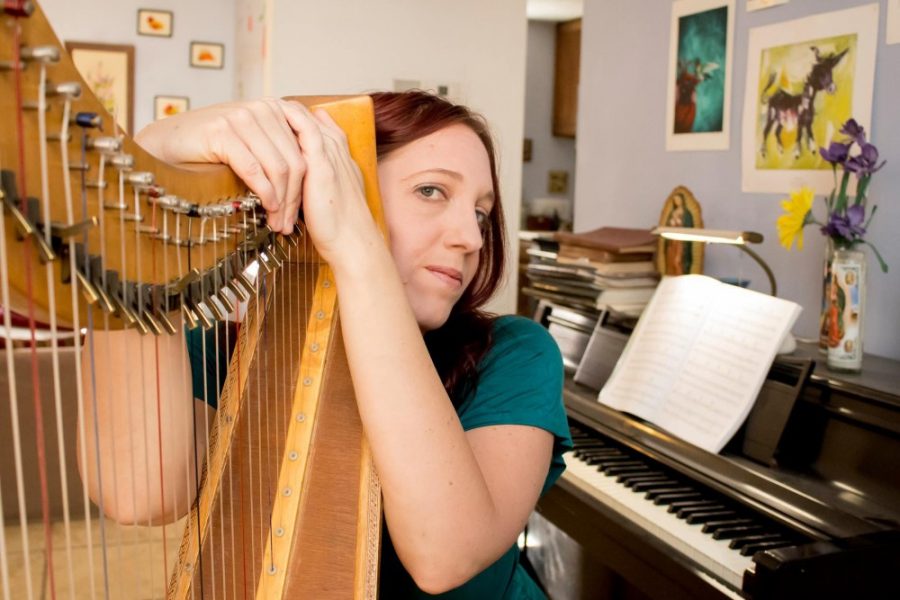Growing up playing violin, Mariah McCammond immersed herself in a sphere of classical music at a young age. After a long hiatus, McCammond rekindled her passion for creating music after she discovered a new instrument and reconnected with another side of herself, a more ‘folky’ side.
RELATED: Get to know Tucson’s historic Rialto Theatre
Daily Wildcat: How did you first start out as a musician?
Mariah McCammond: I started singing and playing violin at the same time, when they generally introduce that in like, fourth grade. [I] did the church choir thing, and I played in school orchestra. I started playing classical guitar in high school, but I always found it kind of awkward. I played upright bass and dabbled in viola. At the peak of my high school musical career, I was playing in jazz band, three orchestras and singing in two choirs.
I really loved upright bass. I had an experience with Tucson Junior Strings in which I played bass and violin. I dropped violin completely when I entered high school, because I was tired of the climate of being a violinist; there’s a personality that’s prevalent in the violin section, and I preferred the back of the orchestra to escape the pressure. I also played in the UA Balalaika Orchestra, so there’s always been a folky side to me.
At 16, I was super burned out on playing classical music. I dropped out of school and stopped playing music altogether. I spent about 10 years away from playing.
RELATED: A Musical Oasis: The Santa Cruz Summer Winds
What brought you back into music?
Well, I lived a totally different life — one that made me really unhappy, and a big reason I was unhappy was because I was no longer involved in music. I started working at Southwest Strings and started playing violin again, which was a very on-and-off process. Through not playing for so long, I had developed a lot of performance anxiety, but I kept going. I started playing cello, which helped me push back to violin for good.
I was always a highly competitive player, and trying to get back to that place from square one is a very frustrating journey. That pressure could be escaped through playing cello.
How did you get away from classical music?
I apprenticed for a violin maker by the name of Blum and Amesquita Violin Makers, who went out of business a few months after I started. I started at a Tucson institution called Beaver’s Band Box.
When I started at Beaver’s Band Box, I was suddenly exposed to people in bands. Eventually I got involved in a country band called Joseph Maples and the Ones That Got Away, which empowered (and horrified) me to break down the wall of performance anxiety on violin.
I started playing in all kinds of bands with folky persuasion. Folk music really saved me from the pressures of classical music. I felt more at home in folk music than classical music. I kept playing, and over the years [my sound] slowly turned into what I do now.
How did you get around to playing harp?
I picked up the harp five years ago and started my solo career. When I first started playing the harp, I was fascinated by how we learn instruments. I tried to avoid what I was supposed to do, and I wanted to make all those decisions by myself. I came to realize over time that I’ve really developed a unique playing style.
Did you develop your writing style based on how you learned to play harp?
I purposefully did not expose myself to harp music for the first two years of playing. I didn’t want to sound like anyone else, so I listened to a lot of electronic music, shoegaze, and folk elements. I like John Adamsand John Cage and I like how they interact with folk music and pop music.
One of my biggest complaints in classical music is that it disconnects with its complexity. Simple, repetitive phrases are much more aesthetically pleasing to the modern musical sensibilities. Those driving rhythms have a way of emotionally connecting with audiences and I wanted to capture that in my music.
I’m a rebel at heart. I have to exercise a lot of restraint not to rebel, sometimes.
What are you currently working on?
Well, I just released an EP called “Vaulted Heart Box,” which was recorded at Sweet Ophelia Studios and mastered by Jim Blackwood (Arizona Public Media).
Right now, I’m writing a miniature folk ballet. I’ll be playing at Tap & Bottle on Aug. 4, and I have semi-regular gigs at The Coronet.
Follow Kincaid Rabb on Twitter









